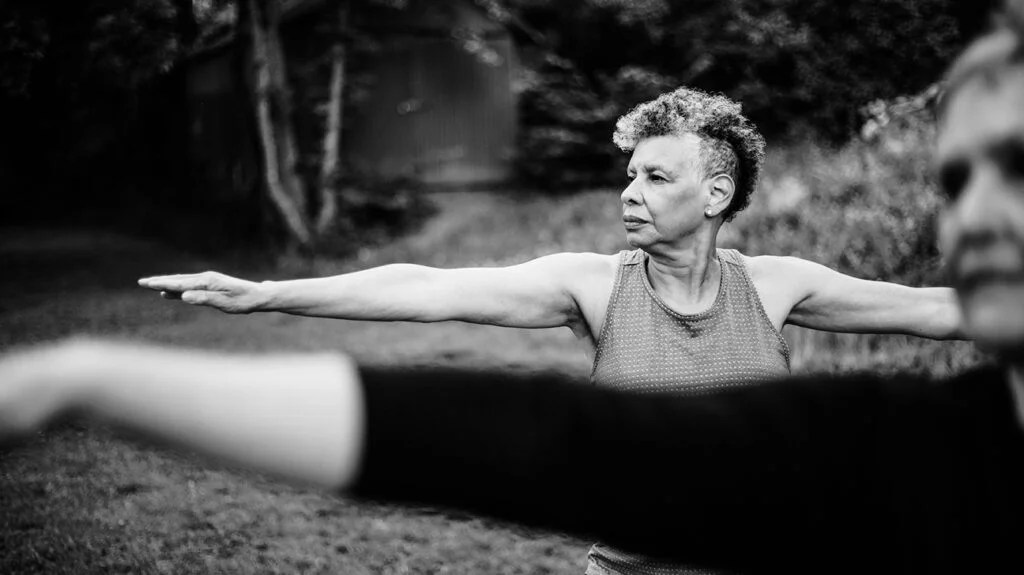
- A new study showed the positive impact of yoga on rheumatoid arthritis. Specifically, it helped maintain cell homeostasis.
- Gentle yoga is recommended for people with RA, but other styles could be modified with props under the guidance of a qualified yoga therapist or instructor.
- Despite the promising results, the study was small in size and short in duration. More research is needed to determine the benefits of yoga for RA symptoms.
Rheumatoid arthritis (RA) is an autoimmune disease that occurs when the body’s immune system attacks its own tissues. The condition causes joint inflammation and pain and over time, may lead to bone erosion and joint deformity.
One of the primary markers of RA is an imbalance of pro-inflammatory T helper 17 (Th17) cells and anti-inflammatory regulatory T (Treg) cells. This is referred to as Th17/Treg cell imbalance.
While there is no cure for RA, a new study published in
Results showed that 8 weeks of practicing yoga greatly lowered disease activity, stabilized inflammation-related biomarkers, and maintained Th17/Treg cell homeostasis.
“The study is compelling because it dives into the molecular mechanisms by which yoga could help alleviate the symptoms of RA,” Dr. Monisha Bhanote, integrative medicine lifestyle physician, told Medical News Today.
“This goes beyond symptomatic relief and looks into how yoga impacts the immune system, particularly the Th17/Treg cell balance, which is known to be disrupted in RA.”
Dr. Bhanote was not involved in the current study but explained that the research examined gene expression patterns and epigenetic markers. This exploration led to a better understanding of how yoga could aid in treating RA.
Thus, the study provides a scientific basis for integrating yoga as an adjunct therapy in RA treatment plans.
The study’s findings could lead to further research into specific elements of yoga most effective in treating RA, Dr. Bhanote said.
Additionally, experts note the study could pave the way for healthcare professionals to recommend yoga as a complementary treatment to standard disease-modifying anti-rheumatic drugs (DMARDs).
Dr. Nikki Tugnet, a rheumatologist and yoga teacher, not involved in the study, told MNT:
“The study offers molecular evidence for yoga as an adjunct to standard of care, which opens up the exciting possibility of healthcare providers recommending yoga programs with treatment. Of note, the 2022 American College of Rheumatology for Integrative Approaches to Treatment of RA guidelines suggest that Mind-Body modalities may be effective in RA; this study adds significant credence.”
Dr. Ahmed Elghawy, staff physician in the Orthopaedic and Rheumatologic Institute at the Cleveland Clinic, also not involved in the research, told MNT:
“I find that a widely available, noninvasive lifestyle modification can significantly impact rheumatoid disease activity from a clinical and immunologic standpoint. This can give clinicians a better roadmap in prescribing specific exercises in addition to treating with standard-of-care medications for rheumatoid arthritis.”
There are many health benefits to practicing yoga, but not all types of yoga may be suitable for people with RA.
Gentle styles of yoga may be best for people with the condition, but other styles of yoga may adapted and modified to support an individual’s abilities. Dr. Elghaway and Dr. Tugnet made the following recommendations:
- Hatha yoga
- Iyengar yoga
- Yin yoga
- restorative yoga
- chair yoga
“These forms emphasize alignment, slow movement, and controlled breathing, which can be beneficial for individuals with mobility limitations,” Dr. Elghawy said.
Many physical yoga postures (asanas) may be practiced with the support of props. According to Dr. Tugnet, helpful yoga postures for RA include:
- Seated Mountain Pose (Tadasana)
- Wind Relieving (or Joint Freeing) Pose (Pawanmuktasana)
- Reclined Butterfly Pose (Supta Baddha Konasana)
- Legs-up-the-Wall (or Chair) Pose (Viparita Karani)
“Yoga for RA should be safe, supported, and accessible,” Dr. Tugnet said. That’s why it’s a good idea to work with a qualified yoga therapist or instructor with knowledge of RA or related conditions.
Dr. Bhanote recommended the following yoga poses for RA:
- Child’s Pose (Balasana)
- Cat-Cow Pose (Marjaryasana-Bitilasana)
- Tree Pose (Vriksasana)
- Gentle Supine Twist (Supta Matsyendrasana)
“Remember, the best type of exercise is the one you can enjoy on a regular basis — and the same goes for yoga,” Dr. Elghawy explained. Be sure to talk with your doctor about the benefits of yoga for RA before starting a new exercise regimen.
Traditionally, regardless of style or intensity, yoga should include elements of mindfulness and meditation since it is a mind-body practice.
Research has shown that meditation helps lower physical biomarkers associated with stress.
“Stress can have negative effects on immune regulation and can often increase the risk of flares,” Dr. Elghawy said.
“As seen in this study, it appeared that in addition to yoga, meditation, and relaxation techniques increased protective T reg cells and decreased inflammatory Th17 cells, which can translate to improved symptoms and less flares.”
As demonstrated by the present study, yoga was found to have a significant impact on T-cell subsets, markers of T-cell aging, and inflammatory markers, Dr. Bhanote stated.
Specifically, yoga helped balance the Th17/Treg cell population, thereby maintaining immune homeostasis.
Additionally, a
The stress reduction aspects of yoga could have additional benefits in reducing inflammation, although more research is still needed to confirm this.
Dr. Bhanote said the study has a few limitations worth mentioning.
- Sample size: The study had a relatively small sample size (n=64), limiting the findings’ generalizability.
- Duration: The study followed participants for only 8 weeks, which may not be long enough to determine the long-term efficacy of yoga practice in RA management.
- Lack of control for other variables: While the study accounted for patients already on DMARDs, it’s unclear how well other lifestyle variables (diet, other forms of exercise, stress, etc.) were controlled for.
- Specificity of yoga program: The study did not specify which type of yoga was used, how often classes were taken, or how strenuous the yoga routines were, making it challenging to replicate the study or recommend specific yoga practices for RA patients.
Dr. Elghawy agreed there are other lifestyle factors to take into consideration:
“It is difficult to know if those in the yoga group were also doing other lifestyle improvements that could improve Treg ang Th17 levels. Those who engage in healthy activities tend to incorporate other healthy lifestyle changes as well and this could have been overlooked.”
Dr. Tugnet also noted a few limitations, namely the skewed disease severity between groups. She noted there were more participants with moderate RA disease activity at baseline in the non-yoga group and more with high disease activity in the yoga group.
Interventions may be more noticeably effective where disease activity is high, Dr. Tugnet explained.
The distribution of joint involvement is what separates RA from other forms of arthritis conditions.
“[RA] is typically characterized as a symmetric, small-joint inflammatory arthritis which can differ from osteoarthritis due to its inflammatory nature, and can be differentiated from other inflammatory arthridities from its serologic profile and distribution of joint involvement,” Dr. Elghawy explained.
“If left uncontrolled, [RA] can cause erosive bone changes, increase risk of cardiovascular complications, and infiltrate other organ systems.”
RA is an autoimmune disorder, which means that the body’s immune system mistakenly attacks its own tissues.
“This is different from osteoarthritis, which is generally caused by the mechanical wear and tear of joints. RA can affect more than just the joints and can also damage a wide variety of body systems, including the skin, eyes, lungs, heart, and blood vessels,” said Dr. Bhanote.
“The hallmark of RA is joint inflammation, often affecting joints on both sides of the body equally. RA can be progressive and may lead to permanent joint deformities if not properly managed.”
